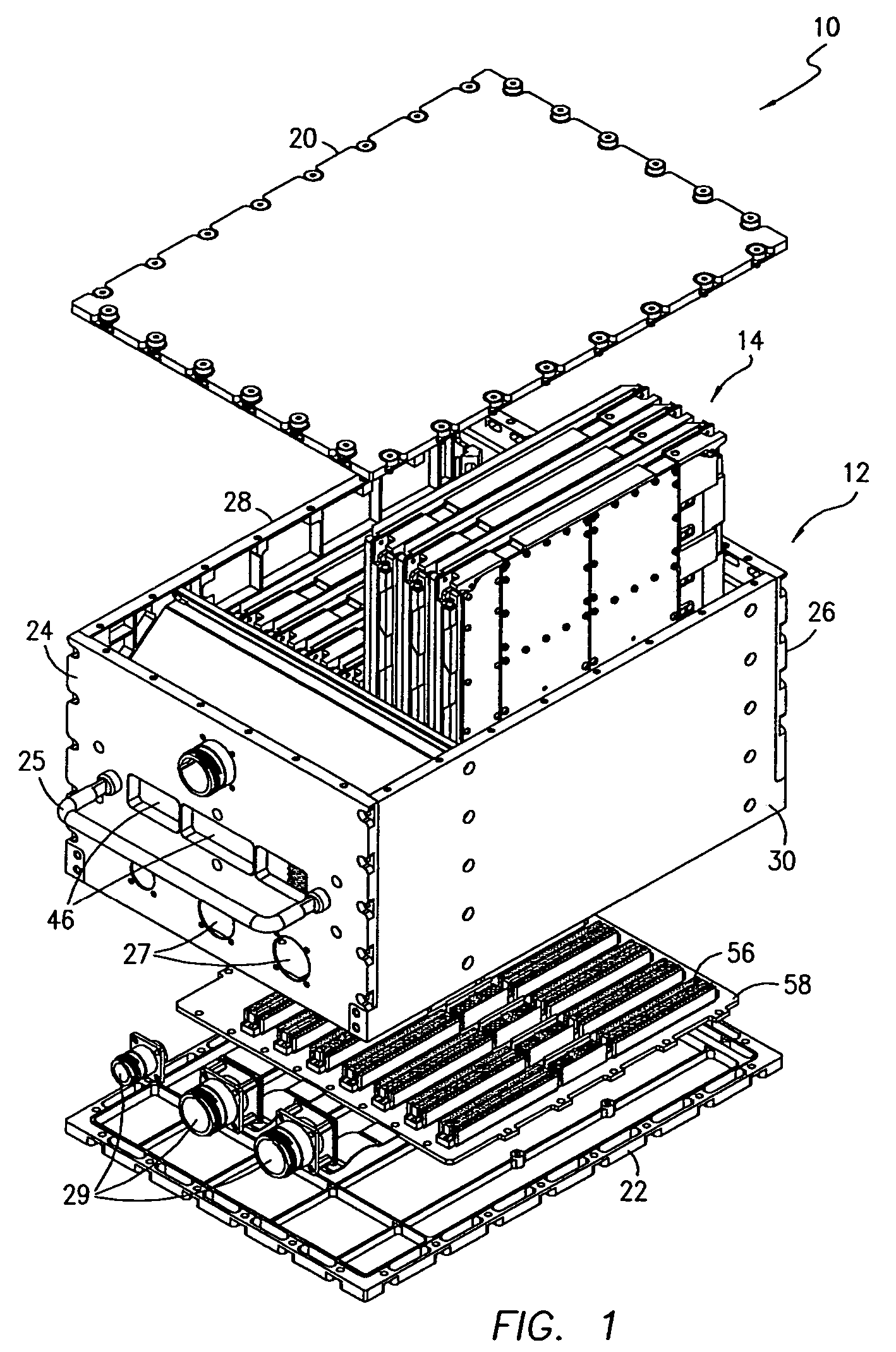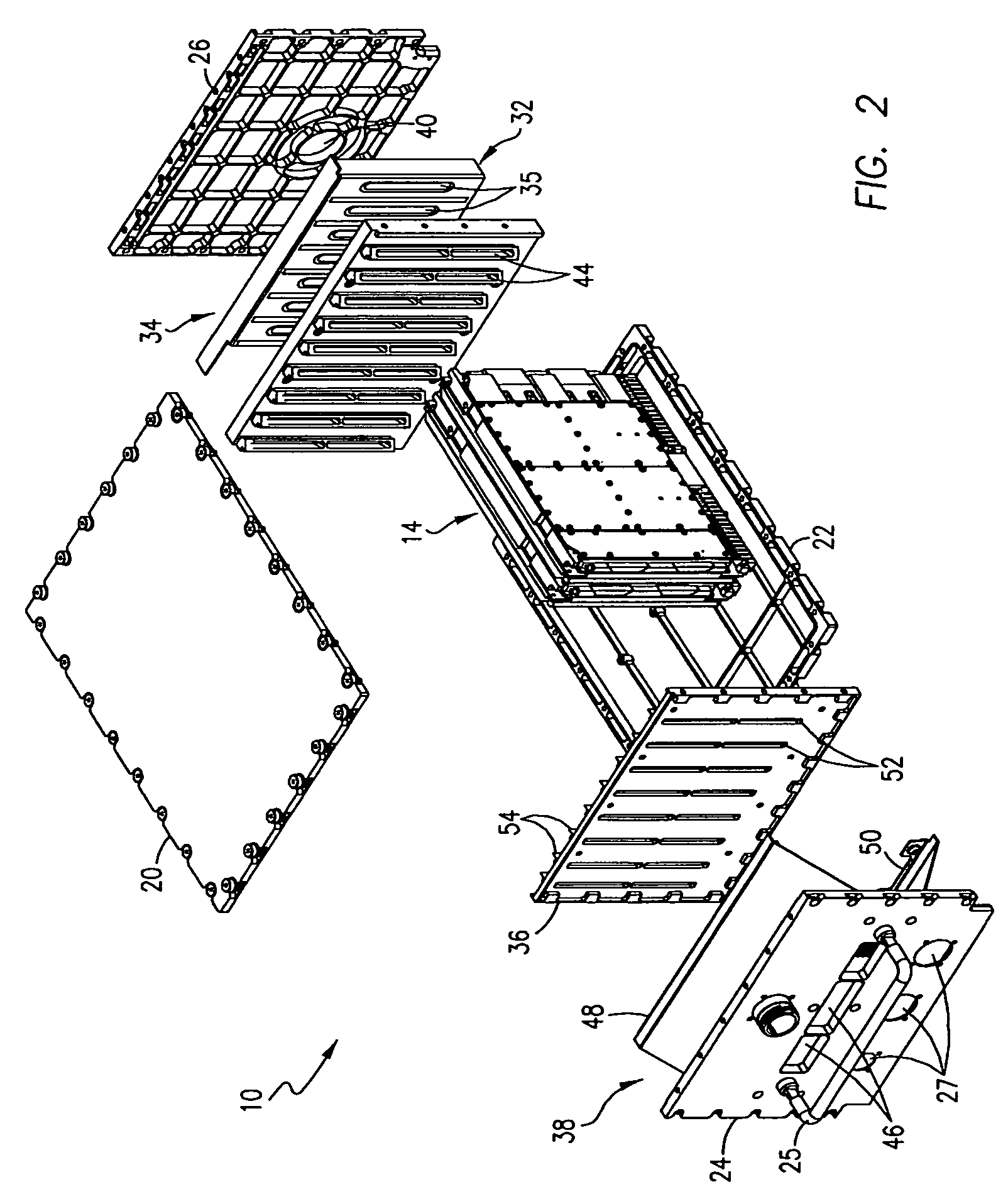Heat exchanger system for circuit card assemblies
a heat exchanger and circuit card technology, applied in the direction of insulated conductors, power cables, cables, etc., can solve the problems of reducing the heat exchanger heat exchange performance, and expensive heat exchange elements, so as to reduce the cost, enhance the heat exchange effect, and simplify the construction
- Summary
- Abstract
- Description
- Claims
- Application Information
AI Technical Summary
Benefits of technology
Problems solved by technology
Method used
Image
Examples
Embodiment Construction
[0017]Referring now to the FIGS., the apparatus 10 of this invention includes a housing or chassis 12 having a hollow interior within which a number of modules 14 are mounted, each consisting of a straight-pass heat exchanger 16 directly connected to a circuit card assembly 18. The construction of the chassis 12 is described initially, followed by a discussion of the modules 14 and the connection between the two.
[0018]As best seen in FIGS. 1 and 2, the chassis 12 comprises a top wall 20, a bottom wall 22, a front wall 24, a back wall 26 and opposed side walls 28, 30 which are interconnected to form a hollow interior. The front wall 24 may be provided with a handle 25 and one or more apertures 27 to receive electrical connectors 29 as schematically depicted in the FIGS. An inlet end wall 32 is connected to the back wall 26 by an inlet plenum 34, and an outlet end wall 36 is mounted to an exhaust plenum 38 connected to the front wall 24. The back wall 26 is formed with an inlet port 4...
PUM
 Login to View More
Login to View More Abstract
Description
Claims
Application Information
 Login to View More
Login to View More - R&D
- Intellectual Property
- Life Sciences
- Materials
- Tech Scout
- Unparalleled Data Quality
- Higher Quality Content
- 60% Fewer Hallucinations
Browse by: Latest US Patents, China's latest patents, Technical Efficacy Thesaurus, Application Domain, Technology Topic, Popular Technical Reports.
© 2025 PatSnap. All rights reserved.Legal|Privacy policy|Modern Slavery Act Transparency Statement|Sitemap|About US| Contact US: help@patsnap.com



